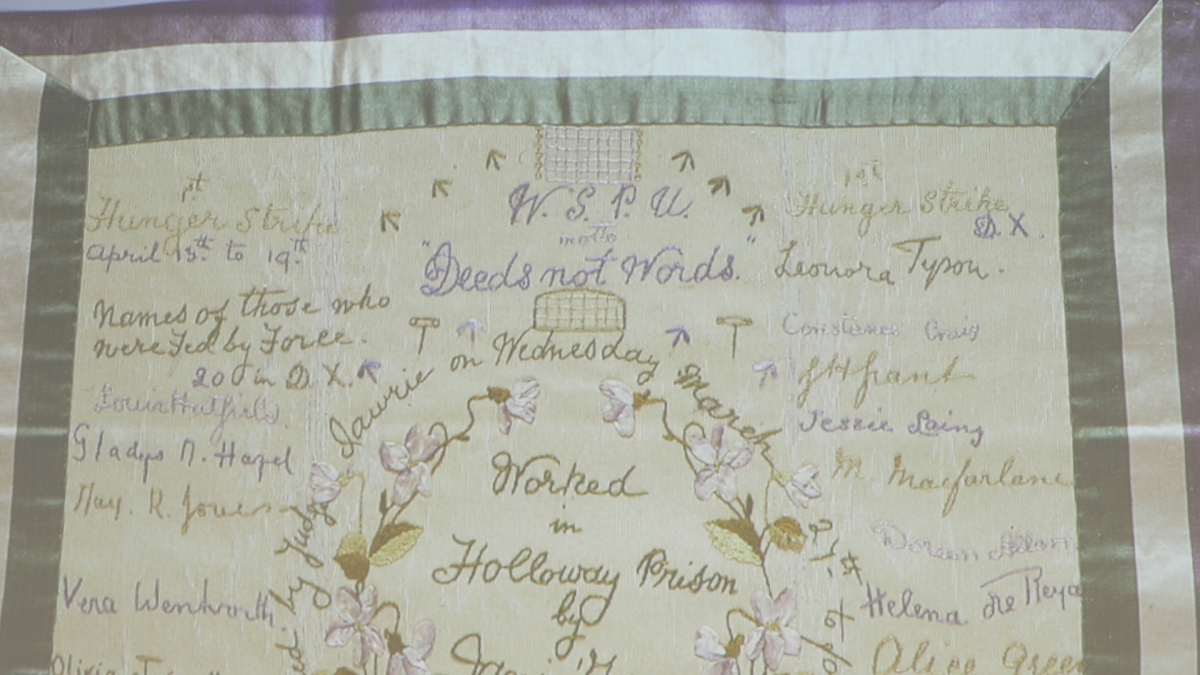Editor's note: This story is being highlighted in ASU Now's year in review. Read more top stories from 2018 here.
Needlework pieces are often seen as simple decorative heirlooms, but many were actually borne from matters of persecution and strife.
In a computer lab at Arizona State University's Department of English last week, ASU Professor Maureen Goggin pulled up a presentation of early 20th-century needlework items made by feminists and suffragettes, exploring the symbolic meaning behind needlework pieces from throughout history.
"What's important about this piece is that women during this time period were recorded by their prison number and not their name. And yet, this piece shows the names of all the women," GogginGoggin is also the director of writing, rhetorics and literacy. said, pointing to the item pictured at the top of this story. "The juxtaposition of decorative 'fancywork' and the vocalization of each women's name embroidered within the fabric exemplifies needlework as a space where both men and women can express themselves rhetorically."
Goggin said rhetoric is often seen as "empty words," but added, "Rhetoric has everything to do with how we communicate, and needlework was one way for many marginalized individuals to visually do just that."
It's a form of communication that has found renewed popularity among a number of activists today, but it's a practice with its roots stretching back into history. Next time you come across a piece of needlework, take a closer look and you may just find an abundance of subtext hidden within the fabric.
More Law, journalism and politics
Can elections results be counted quickly yet reliably?
Election results that are released as quickly as the public demands but are reliable enough to earn wide acceptance may not always be possible.At least that's what a bipartisan panel of elections…
Spring break trip to Hawaiʻi provides insight into Indigenous law
A group of Arizona State University law students spent a week in Hawaiʻi for spring break. And while they did take in some of the sites, sounds and tastes of the tropical destination, the trip…

LA journalists and officials gather to connect and salute fire coverage
Recognition of Los Angeles-area media coverage of the region’s January wildfires was the primary message as hundreds gathered at ASU California Center Broadway for an annual convening of journalists…


